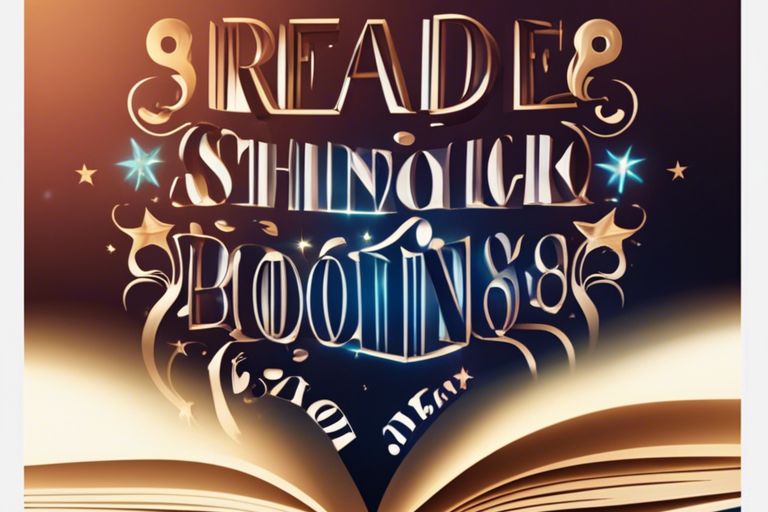It’s crucial to master alphabet sounds for phonics success when learning to read. Understanding the relationship between letters and their corresponding sounds is key to helping children decode words efficiently and become fluent readers. In this blog post, we research into the importance of mastering alphabet sounds through phonics, explore the innovative game-changing strategies that can enhance learning, and provide valuable tips for parents and educators to support children on their reading journey. Let’s unlock the power of phonics and pave the way for literacy success!
Key Takeaways:
- Systematic Phonics Approach: Letters and Sounds provides a systematic approach for teaching children to read using phonics, focusing on letter-sound correspondences to help children become fluent readers by age 7.
- Phonics Sound Pronunciation: Teaching children pure sounds like “ah”, “b”, and “k” directly links letters to sounds, making it easier for children to blend sounds and read words effectively.
- Structured Learning Phases: The program is divided into six phases, starting with developing speaking and listening skills in Phase 1, and progressing to consonant digraphs and long vowel sounds in later phases to enhance reading and spelling skills.
The Power of Sounds
Some Sounding Out a Better Way to Teach Reading methods emphasise the importance of mastering alphabet sounds for phonics success. Phonemic awareness, the ability to hear and manipulate individual sounds in words, is key to developing strong reading skills.
Phonemic Awareness Explained
One crucial aspect of phonics instruction is phonemic awareness, which involves understanding and manipulating individual sounds (phonemes) in spoken words. By focusing on phonemic awareness, children can learn to isolate, blend, and segment sounds in words, laying a strong foundation for reading fluency.
The Impact of Sound Recognition on Reading Development
Any improvements in sound recognition skills have a significant impact on reading development. Research shows that children who have a strong understanding of phonemes and their corresponding graphemes are better equipped to decode unfamiliar words and become proficient readers. The ability to accurately recognise and differentiate between sounds is necessary for successful reading acquisition.
Building Strong Foundations for Decoding Words
Power lies in building strong foundations for decoding words by mastering sound recognition. Understanding the relationship between letters and the sounds they represent is fundamental to decoding written language. By developing sound recognition skills, children can confidently decode words, leading to improved overall reading proficiency.
Alphabet Sounds vs. Letter Names: Understanding the Difference
Distinct Differences and Their Significance
One key distinction in early literacy education lies in the emphasis on alphabet sounds over letter names. While traditional methods focused on teaching letter names like ay, bee, and sea, the phonic approach of connecting graphemes to phonemes prioritizes the direct relationship between letters and sounds. This shift is significant as it enables children to decode words more efficiently and fluently, avoiding confusion caused by discrepancies between letter names and sounds.
The Advantages of Emphasizing Sounds in Early Education
Their acquisition of phonics helps children become fluent readers by age 7, a crucial milestone for literacy development. With a focus on pure sounds like ah, b, k, children can easily blend letter sounds to read words accurately. Research shows that early exposure to phonics through a systematic approach like Letters and Sounds enhances reading and writing skills, laying a solid foundation for academic success.
Shifting Educational Focus from Names to Sounds
The shift towards prioritizing phonics over letter names in early education is transforming literacy instruction in schools. By teaching children letter-sound correspondences and fostering oral blending and segmenting skills, educators are equipping students with the tools needed to become proficient readers and effective communicators. This shift reflects a growing understanding of the importance of phonological awareness for language acquisition and literacy proficiency.
Techniques for Mastering Alphabet Sounds
Engaging with Interactive Sound Matching Games
The acquisition of alphabet sounds can be reinforced through interactive sound matching games. These games provide a fun and engaging way for children to practice identifying and matching letter sounds to their corresponding symbols. By actively participating in these games, children can enhance their phonemic awareness and develop a stronger foundation for reading success.
Utilizing Songs and Rhymes for Phonemic Sound Emphasis
For a dynamic and memorable approach to mastering alphabet sounds, songs and rhymes can be a powerful tool. Incorporating catchy tunes and rhythmic patterns can help reinforce the recognition of phonemes and their corresponding graphemes. Research shows that the use of musical elements in learning can significantly enhance phonemic awareness and aid in the development of reading skills.
Implementing Sound Sorting Activities
Utilizing sound sorting activities is an effective method to help children distinguish between different phonemes. By categorizing sounds based on their similar characteristics, children can strengthen their ability to identify and differentiate between various letter-sound correspondences. Sound sorting activities provide a hands-on experience that encourages active engagement in the learning process.
Incorporating Multisensory Approaches
The Concept and Effectiveness of Multisensory Learning
One effective approach in teaching children to read using phonics is through multisensory learning, which engages multiple senses in the process. Research has shown that incorporating visual, auditory, and kinesthetic elements can enhance learning outcomes by catering to different learning styles and improving information retention. By combining these modalities, children are more likely to grasp and retain the phonics concepts taught in programmes like Letters and Sounds.
Strategies for Visual Learners
Visual learners benefit from seeing information presented in visual formats, such as charts, diagrams, and videos. Understanding phonics through colourful visuals, letter-sound correspondence charts, and word cards can help visual learners absorb and retain the information more effectively.
Techniques for Auditory Learners
The auditory learning style involves learning through listening and speaking. The use of rhymes, songs, and oral blending and segmenting activities in phonics instruction can greatly benefit auditory learners. The auditory cues help in reinforcing the relationship between letters and sounds, aiding in the development of reading skills.
Approaches for Kinesthetic Learners
Effectiveness in teaching phonics to kinesthetic learners involves incorporating hands-on activities and movement. For instance, using sand or textured materials to write letters, engaging in letter formation games, or acting out phonics concepts can engage kinesthetic learners and enhance their understanding and retention of phonics principles.
The Role of Technology in Learning Alphabet Sounds
Evaluating the Benefits of Digital Learning Tools
Your journey towards mastering alphabet sounds for phonics success can be greatly enhanced through the use of digital learning tools. Research shows that technology in education can improve engagement, motivation, and learning outcomes. By incorporating digital tools, children can practice phonics skills in interactive and dynamic ways, making the learning experience more enjoyable and effective.
Tech Applications that Aid in Sound Recognition
Sounds are fundamental building blocks in phonics, and technology offers a range of applications to support sound recognition. From interactive games to sound-based exercises, digital tools can provide targeted practice for children to distinguish between various phonemes. These applications can help improve auditory discrimination, imperative for developing strong reading skills.
Another valuable aspect of using technology for sound recognition is the immediate feedback it provides. Children can receive instant corrections on their pronunciation, helping them refine their phonetic skills efficiently.
Recommendations for Interactive Learning Apps
Tech-savvy parents and educators seeking interactive learning apps for mastering alphabet sounds should look for features that align with the Letters and Sounds approach. Apps that offer a comprehensive range of phonetic activities, from basic to advanced levels, can support children’s progression through the different phases of phonics learning. Additionally, interactive elements such as quizzes, games, and recording functions can make the learning process engaging and enjoyable, enhancing retention and application of alphabet sounds.
Overcoming Challenges in Phonics Learning
Addressing Difficulties with Similar Sound Discrimination
The ability to distinguish between similar sounds is crucial in phonics learning. This skill can be challenging for some learners, but with the right approach, it can be tackled effectively. The Hooked on Phonics – Learn to read programme offers engaging activities and resources to help children hone their sound discrimination skills, making learning to read a more manageable and enjoyable experience.
Strategies for Managing Dyslexia in Phonics
Phonics is a game-changer in teaching children to read, but for students with dyslexia, it can present additional challenges. Dyslexia affects the way individuals process language, making phonics learning more complex. However, tailored strategies such as providing multisensory activities and incorporating assistive technology can help students with dyslexia navigate phonics learning more effectively.
Creating Adaptive Learning Experiences
Discrimination between similar sounds and letters is a fundamental skill in phonics learning. Creating adaptive learning experiences that cater to each learner’s needs can make a significant difference in overcoming challenges in phonics. By implementing personalised activities, incorporating visual aids, and offering multisensory approaches, educators can enhance the learning experience and support students in mastering alphabet sounds for phonics success.
Real-World Applications: Beyond the Classroom
The Importance of Practice in Diverse Settings
With the Letters and Sounds phonics approach being a crucial tool in teaching children to read, it is important to reinforce and practice these skills in diverse settings. Research shows that consistent practice in various environments enhances a child’s ability to internalise and apply phonics rules effectively. By incorporating phonics practice into different contexts, such as at home, during outings, or while engaging in fun activities, children can strengthen their understanding of letter-sound correspondences.
Reinforcing Alphabet Sound Skills at Home
Skills in the Letters and Sounds programme can be reinforced effectively at home, supplementing learning in the classroom. Real-world applications of phonics at home, through activities like reading together, playing word games, or even pointing out letter sounds in everyday situations, can significantly boost a child’s reading progress. Encouraging children to practice phonics skills outside of school helps solidify their grasp of phonics, leading to improved reading fluency and comprehension.
Incorporating Phonics into Everyday Life
Skills in the Letters and Sounds programme can be seamlessly incorporated into everyday life, enriching a child’s reading experience. By embedding phonics activities into daily routines, such as identifying letter sounds on signs, labels, or even during meal preparation, children can enhance their phonics knowledge effortlessly. This integration of phonics into daily activities not only reinforces learning but also makes the reading process more engaging and practical for children.
Integrating Phonics with Other Reading Strategies
Combining Phonics with Sight Word Recognition
Recognition of sight words alongside phonics is vital for a well-rounded reading approach. Combining phonics, as outlined in How Most Children Learn to Read, with the instant recognition of common words enhances fluency and comprehension. By seamlessly integrating phonics instruction with sight word exercises, children strengthen their ability to decode unfamiliar words while swiftly identifying frequently used words.
Synergy with Contextual Guessing and Language Structures
An important aspect of reading fluency is the synergy between phonics, contextual guessing, and language structures. By grasping the rules of phonics, understanding contextual clues, and recognising language patterns, young readers can effectively navigate diverse text types. This comprehensive approach, as indicated in the Letters and Sounds framework, fosters a deep understanding of language structure and enhances reading comprehension.
Sequential Learning: From Sounds to Sentences
Phonics serves as the foundation for sequential learning, guiding children from individual sounds to constructing sentences. By mastering phoneme-grapheme correspondences at each phase, learners progress towards reading fluency and sentence formation. For instance, Phase 3 of the Letters and Sounds programme introduces consonant digraphs and vowel digraphs, preparing children to decode more complex words and sentences with ease.
Assessing Progress and Celebrating Milestones
Tools for Measuring Phonics Mastery
Mastery of alphabet sounds is a crucial milestone in a child’s reading journey. To assess progress and ensure phonics success, tools such as the Letters and Sounds framework can be invaluable. Tracking a child’s ability to link letters to sounds and decode words is imperative in gauging their phonics proficiency.
Setting Achievable Goals and Benchmarks
Goals play a pivotal role in guiding a child’s phonics learning. Setting achievable benchmarks, aligned with the phases outlined in Letters and Sounds, helps track progress effectively. Celebrating reaching these goals is motivating and boosts a child’s confidence in their reading abilities.
Recognizing and Rewarding Achievements
Tools such as progress charts and reward systems can be instrumental in acknowledging a child’s achievements in mastering alphabet sounds. Positive reinforcement through praise and small rewards can encourage continued progress and make the learning journey more enjoyable.
The Transformative Effect of Alphabet Sound Mastery
Transformative changes occur when a child gains mastery over alphabet sounds. Improved reading skills, increased confidence, and a deeper love for literature are just some of the benefits. Celebrating these milestones is crucial in reinforcing the value of phonics in reading development.
Encouragement for Continued Phonics Exploration
Achievements in phonics mastery should serve as a springboard for further exploration. Encouraging children to investigate into more complex phonics rules and expand their vocabulary can deepen their reading comprehension and fluency, laying a strong foundation for lifelong learning.
The Lifelong Benefits of Reading Proficiency
Recognizing the lifelong benefits of reading proficiency is imperative. Strong phonics skills lead to improved literacy, academic success, and enhanced overall communication skills. Investing in phonics education early on sets children on a path to lifelong learning and success.
In-Depth Readings on Phonics Instruction
Encouragement to investigate into in-depth readings on phonics instruction can provide educators and parents with valuable insights and strategies to support children’s learning. Resources such as research papers, articles, and books can offer a deeper understanding of effective phonics teaching methods.
Recommended Educational Tools and Platforms
Measuring progress and enhancing phonics skills can be supported by a range of educational tools and platforms. Interactive phonics apps, online learning platforms, and educational games offer engaging ways to reinforce learning and make phonics practice enjoyable for children.
Communities and Forums for Support and Exchange
Tools such as online communities and forums provide a platform for educators and parents to share experiences, seek advice, and exchange ideas on phonics instruction. Building a supportive network can enhance phonics teaching practices and foster a collaborative learning environment.
FAQ
Q: What is ‘Hear the Difference: Mastering Alphabet Sounds for Phonics Success – A Game Changer in Learning to Read!’?
A: ‘Hear the Difference: Mastering Alphabet Sounds for Phonics Success – A Game Changer in Learning to Read!’ is an educational tool designed to enhance phonics learning by helping children master alphabet sounds. It focuses on improving phonemic awareness and pronunciation skills to aid in reading development.
Q: How does ‘Hear the Difference’ benefit children learning to read?
A: ‘Hear the Difference’ provides a structured approach for children to distinguish and accurately pronounce letter sounds, aiding in their phonics learning journey. By mastering the subtle differences in alphabet sounds, children can improve their reading fluency and comprehension.
Q: Is ‘Hear the Difference’ suitable for all learning levels?
A: Yes, ‘Hear the Difference’ is designed to cater to children at various learning levels. Whether a beginner in phonics or seeking to refine pronunciation skills, this tool offers a valuable resource to enhance alphabet sound recognition and support reading development.












